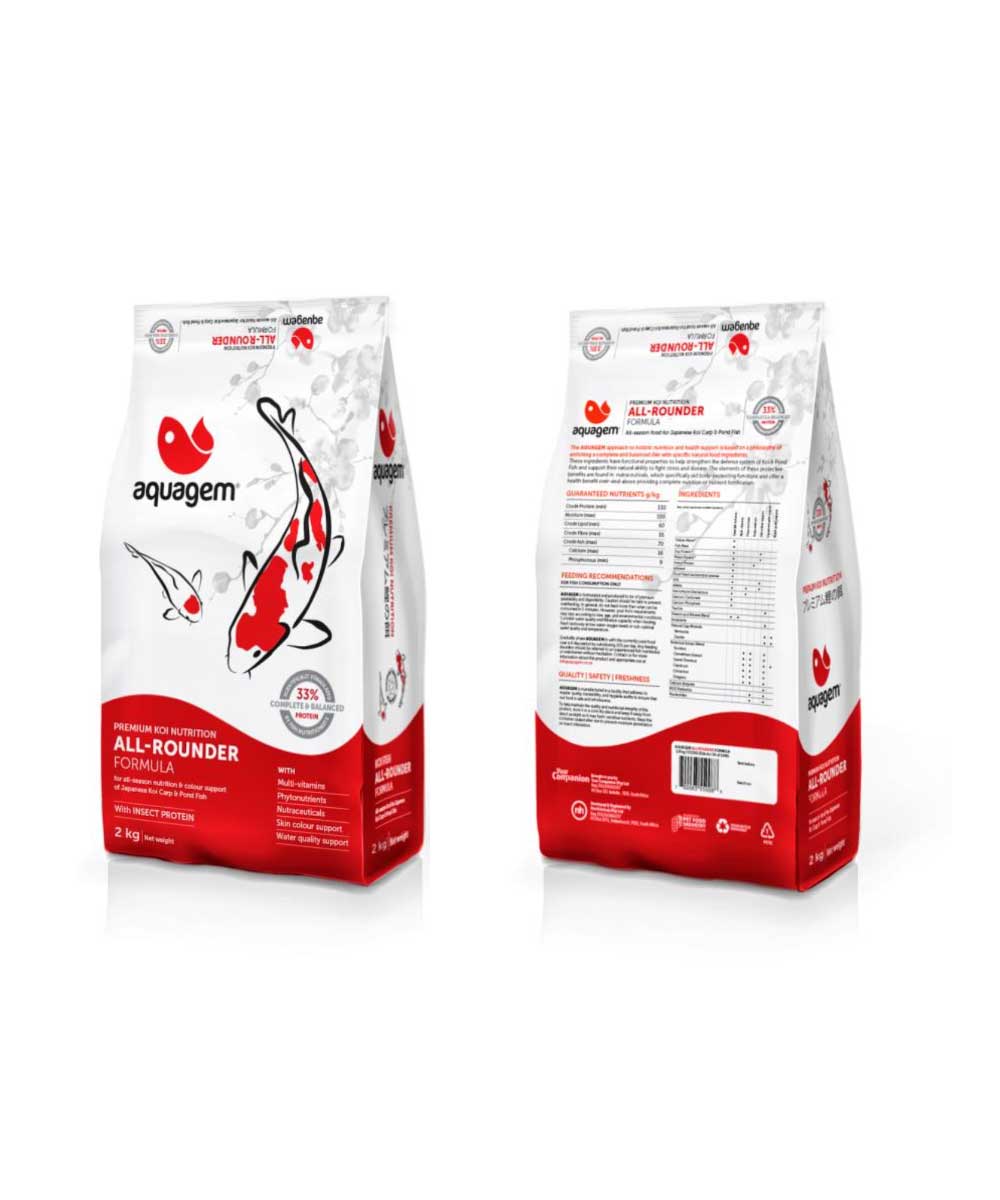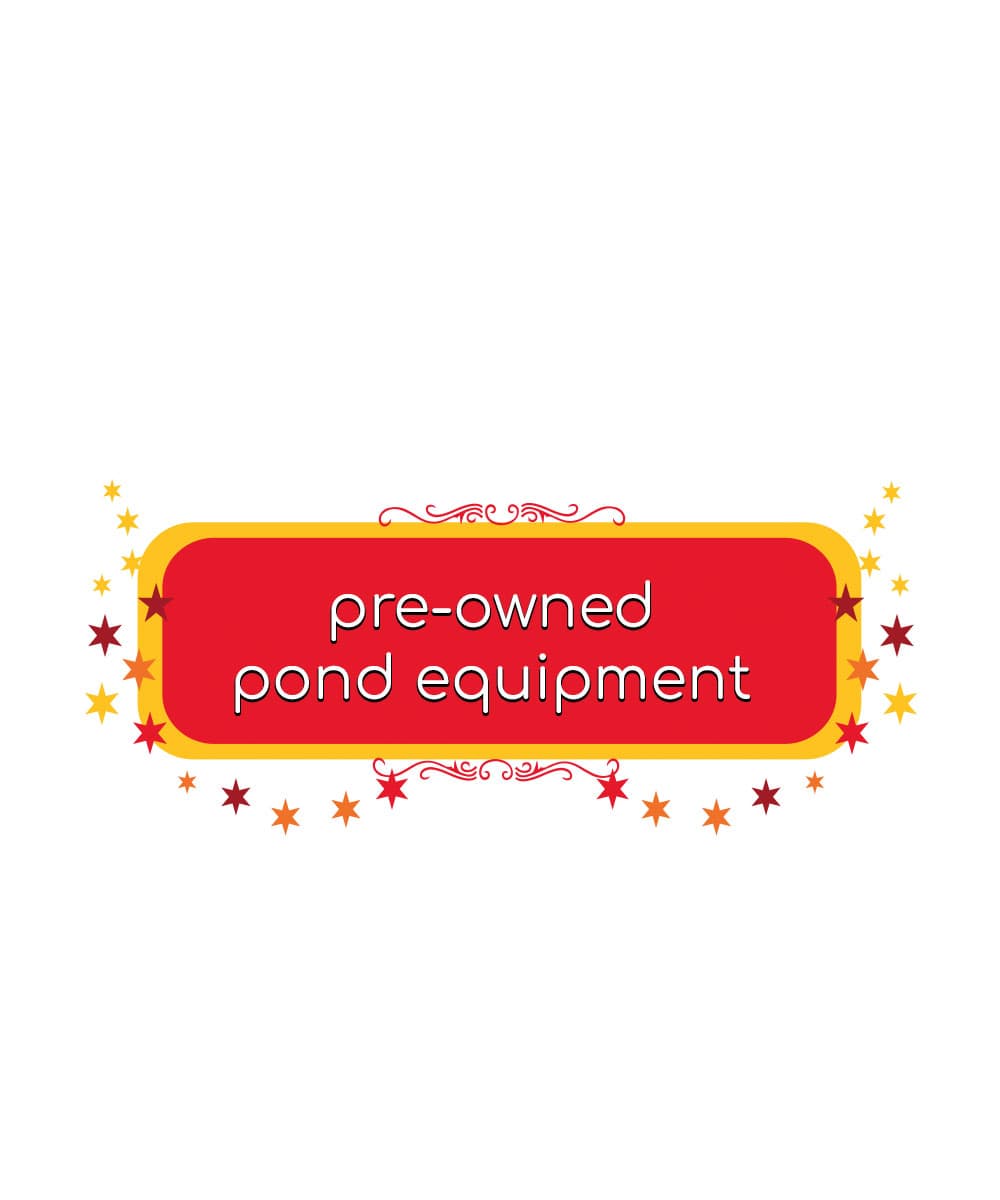Pond Treatment
Treating with Potassium Permanganate
Treating “dirty” pond water including all types of algae, written by Neville Boardman.
TREATMENT OF “DIRTY” POND WATER INCLUDING ALL TYPES OF ALGAE
A pond issue that is very frustrating to me as well as most keepers out there.
Here is my method of how to avoid green water and also how to get rid of it. I have only once had my pond go completely green in all my years of Koi keeping.
The methods I use is a culmination of articles and talks that I have had over the years on this annoying issue with various people including Doc Johnson, Norm Meck and others.
Let us refer to this as a visibility issue rather than just green water as green may be a bit misleading.
When you cannot see your fish clearly or you cannot see your pond floor clearly you have to do something.
You have to understand why and what is happening in your pond and what you are actually seeing.
Are you seeing sediment or algae or both?
If your pond’s visibility is just cloudy and visibility is only a few centimetres and you can see some particles in the water you may have just dirty water.
Dirty water or suspended particles can be made up of a couple of things but mainly in a reasonably well kept pond it will be either one of the following or all.
- Fish faeces
- Fish cuticle
- Brown algae
- Small pieces of string algae
- Different types of green algae including suspended as well as floating algae
The above is best viewed at night with a torch light shining into the water.
The first two are referred to as fish related and is most often a result of your stocking density being too high, your turnover rate being too low, your water changes being irregular or too small or your sediment filter being either too small, inadequate or just clogged up and not cleaned frequently enough.
Solving this issue is rather simple and you can start by reducing the feeding rate and take note; within a few days the situation should improve.
Reduce stocking by removing doubles and fish that are under performing.
Increase you water changes to a minimum of 10% per week and keep it regular. Improve the cleaning methods of your sediment filter and also shorten the intervals.
Attending to this will normally solve the fish related sediment issue.
Dealing with the second clarity issue namely algae could be a bit more complex and there are various opinions out there but, here is mine; as I said before made up of reading some good articles of some of the top Koi and pond researchers.
If you are sure that you only see algae, green or brown, it is rather simple and you can treat your pond with a good type of Pond clear and the issue will disappear within a week or ten days.
Unfortunately, there are two main reasons for the growth of algae and “pond clear” will address either one of them leaving the other still feeding the algae growth. Algae grow mainly from the nitrates as well as the phosphates found in pond water and “pond clear” mostly only addresses either one of the two.
Yes, too much sun and also new systems is prone to algae growth, as well as total replacement of sediment filter media.
A good diagnoses and understanding why your pond visibility is poor, becomes important. Do you have a combination of all or just one and if one which one?
These were some of the reasons for me starting to use Potassium Permanganate or for short referred to as “PP” to attain water clarity as PP will address all of the reasons and will take care of any type of sediment or algae including string algae.
Here are a few points to take into consideration before you go ahead and dose your pond with PP.
- Overdosing PP will kill your fish.
- You should know your pond volume accurately and not approximately.
- You have to use a very accurate method of measuring your dosage.
- PP will affect fish with gill issues adversely.
- PP needs to be dissolved in hot water, not boiling just hot, and stirred well before dosage.
- You need to have a neutralizer for the dosage of PP, either peroxide volume 10 at 50Ml per 1000Lt or thiosulphate at 10 gram per 1000Lt at hand.
- PP can stain clothing permanently.
- In clear water a dose of 4gr per 1000 litres becomes lethal to fish.
- I have not yet had a problem with PP treatments on most pond species including Gold fish, mosquito fish, and guppies, including fry.
- PP will affect your biological filter in some way, good or bad depending on the age of the filter. I would recommend that the filter be bypassed after day one if it is less than 1 year old.
- When PP turns brown from the initial pink (best viewed in a polystyrene cup from above) it has expended itself and will have no further effect.
- The first dose is the critical one and the fish should be monitored till the water turns brown.
- Additional circulation and aeration is a good idea and with load shedding around make sure you have an alternate plan, i.e., gen set or a neutraliser. PP removes a lot of oxygen from the water.
- No feeding during treatments.
Once you have ticked all the above you can proceed to day one.
Day One (preferably late afternoon)
- Start off by doing a 20 to 30% water change, and do not use any DE chlorinator.
- Fill the pond to its known volume level.
- Weigh out your first dose, now if your water is dirty (you can’t see the floor) you can safely dose at 3gr per 1000Lt.
Note the time the water takes to turn brown, in most cases it will be as fast as 30 minutes. Good you may relax now unless there were some fish stressing. If only one of your fish were showing stress I would remove that fish to QT and continue, if more show stress I would administer as first choice the Peroxide volume10 at 50Ml per 1000 Lt. Should you have been forced to do this, remember that the latency of the peroxide is at least three days; therefore for three days you won’t be able to treat further with PP.
Day Two (again, late afternoon)
- Reduce the dosage to 2,5 gr per 1000 Lt.
- Repeat of day one but note the time again there should be an increase in time before the water turns brown again.
- If your fish had no issues on day one there won’t be any further concern.
Day Three
- Repeat of day two.
Day Four
- Assuming that your pond was not extremely dirty you may consider the treatment as complete. I have had cases where I continued for 8 days safely.
- If there was a lot of string algae present you may well have to go for one or even two more treatments.
- You can now do a 30% water change and clean out your sediment filter as it should now be rather dirty. Especially sand filters will need a good stirred back wash.
- Add the Volume 10 Peroxide at 50Ml per 1000Lt. Your pond should clear up within about two hours.
Most pathogens and all waterborne bacteria will be eradicated.
Interesting thing to note after these treatments is that your fish fins will have brown PP residue still stuck to them, this will however clear within a day and you will note that the fish will appear a lot brighter. This is due to the fact that PP does remove some of the cuticle (there is sediment there).
Your fish will feed very well after the treatment.
NOTE:
It is very important that you do not keep the water pink for longer than 4 hours; neutralize using Peroxide or dechlorinate crystals.
by Neville Boardman



